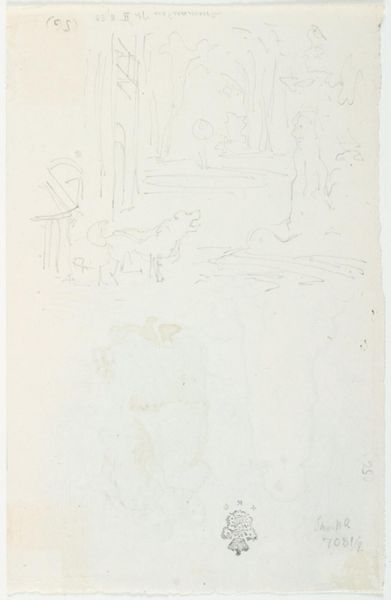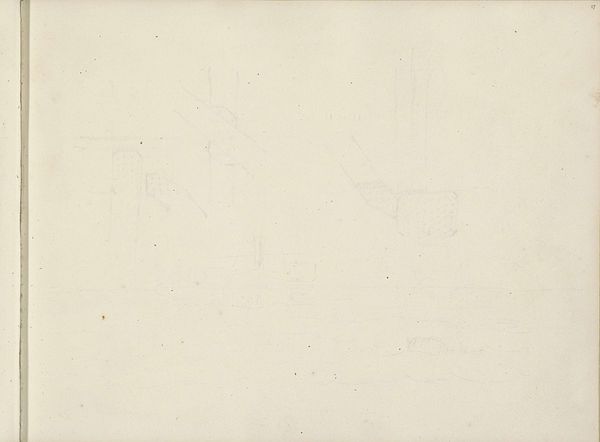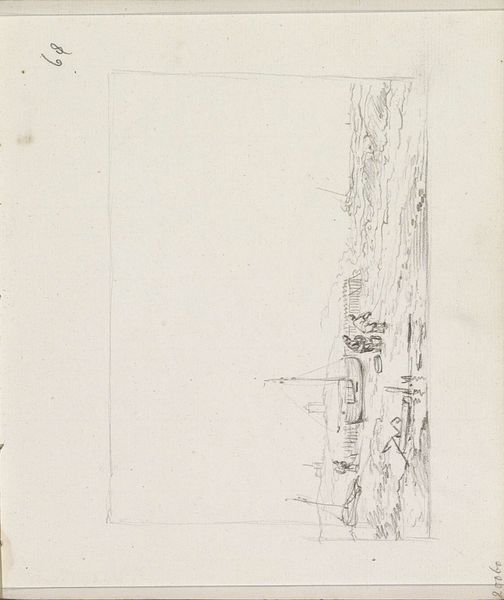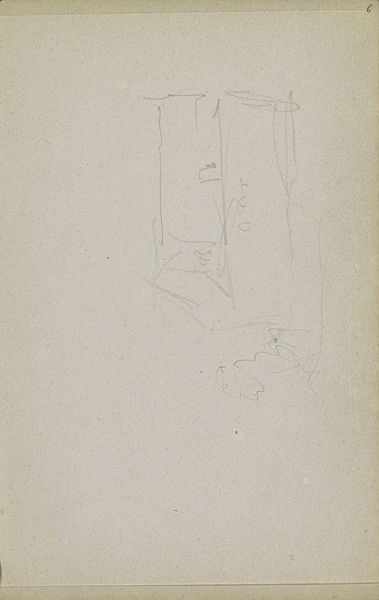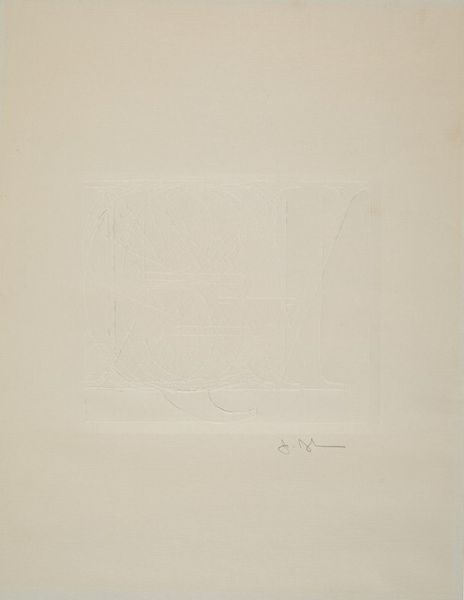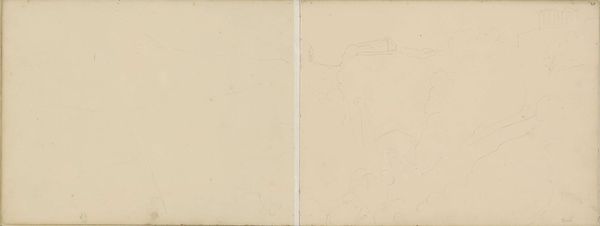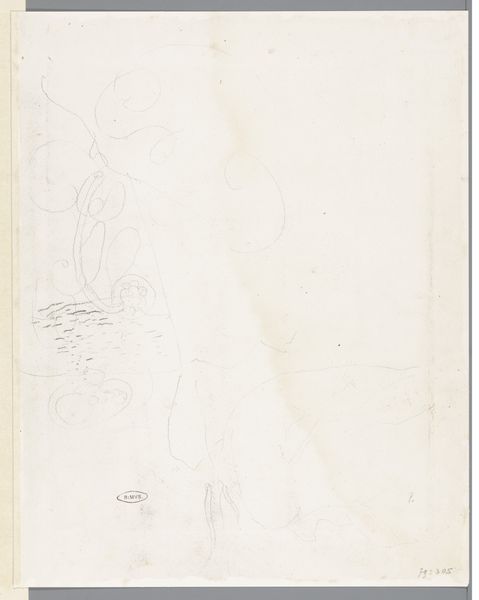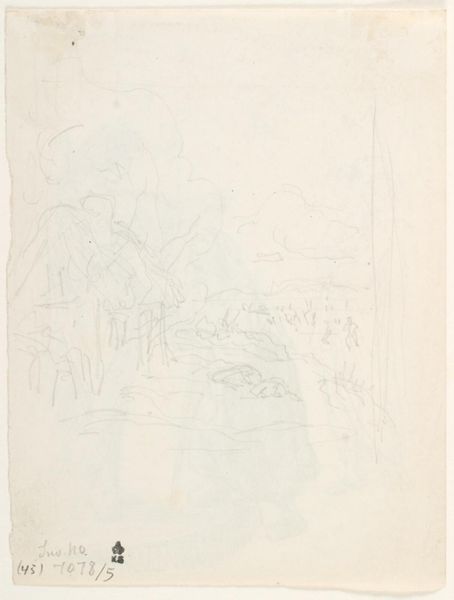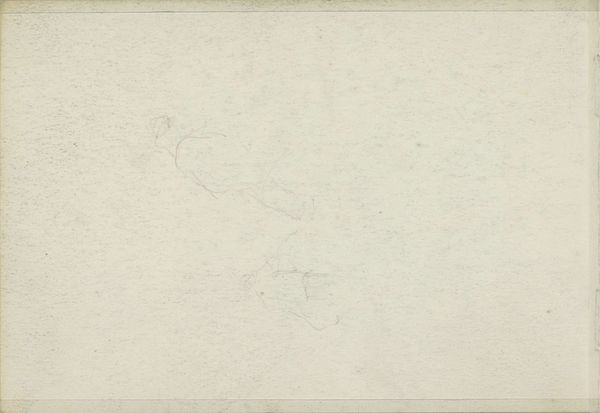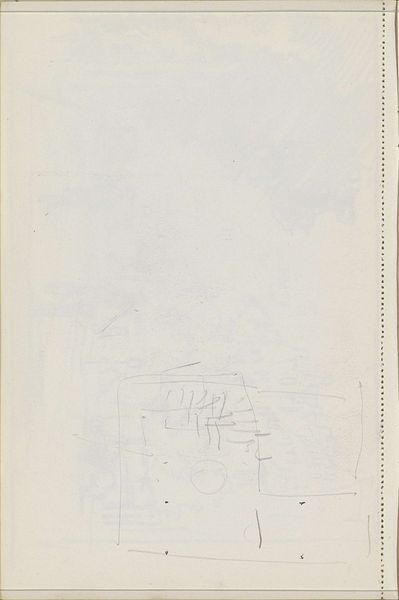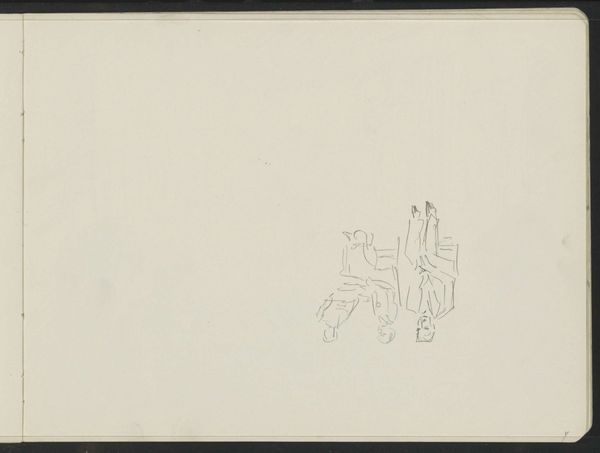
drawing, paper, pencil
#
drawing
#
etching
#
figuration
#
paper
#
pencil
#
line
Copyright: Rijks Museum: Open Domain
Editor: This is "Liggende naakte vrouw en een geklede knielende vrouw," made around 1916 by Reijer Stolk, using pencil and paper. It feels so fragile and ephemeral. What meaning can we draw from something that feels so incomplete? Curator: Indeed. The incompleteness is key, isn't it? These fleeting lines remind me of cave paintings – raw expressions attempting to capture form, yes, but also something deeper, perhaps a connection to the spiritual through the physical. Consider the act of kneeling, often associated with supplication or reverence. How might that interact with the vulnerability of the reclining nude? Editor: So, is the kneeling woman worshipping the nude figure? Or perhaps attending to her? I initially saw only two figures, but now it feels like a power dynamic is suggested. Curator: Perhaps. Or is it empathy? The image, though unfinished, compels us to fill in the emotional space, to consider not just *what* is depicted, but *why*. Nudity, throughout art history, carries many meanings. What does it evoke for you here? Editor: Without the artist giving us firm lines, the nude feels exposed, and yet strong. Perhaps the kneeling woman feels the same? It's like they are connected, not separated, through their very different presentations. Curator: Exactly. Consider how societal norms influence such depictions and, equally important, how these images reflect back and reshape those norms. It’s a feedback loop of representation and reality. Editor: That's so fascinating! I see now how a simple sketch can carry such weight and cultural baggage. Curator: Visual symbols offer pathways to cultural memory, even in the most seemingly simple or unfinished works. We’ve only scratched the surface.
Comments
No comments
Be the first to comment and join the conversation on the ultimate creative platform.
